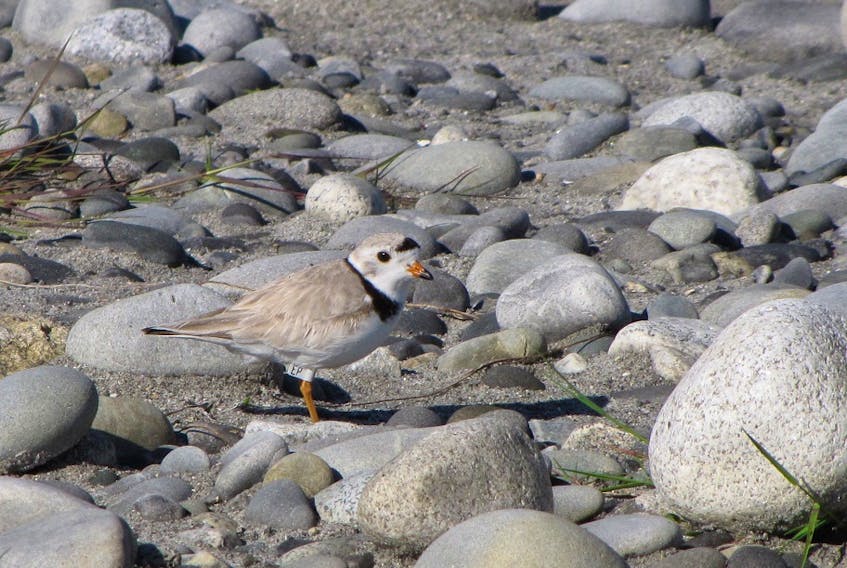WHITE POINT – It was big news when a regular guest of the White Point Beach resort was recently spotted on the beach in Turks and Caicos.
X2, a mother piping plover originally banded at White Point, was spotted on Feb. 5 basking on the Caribbean island by Beth MacDonald and Jen Rock of Environment Canada's Canadian Wildlife Service.
Environment Canada has been banding Piping Plover chicks and adults across Eastern Canada since 2013, says Rock. The aim is to assess adult and chick survival rates and to identify where birds go during the non-breeding season, including winter and migration.
Since then, Rock says one adult and four chicks were banded in 2014 at White Point, while two adults and one chick were banded in 2017, for a total of eight plovers. Six of these birds have been re-sighted since banding.
“Four of them were on wintering grounds, with one in Cuba, two in the Bahamas and one in Turks and Caicos,” she says.
According to Sue Abbott, Nova Scotia program coordinator for Bird Studies Canada, it is not surprising to spot this plover in the Turks and Caicos. These islands are within their wintering range, which extends from the southeast coast of the US to the Caribbean and Mexico, she says. This would likely be where they would spend most of their non-breeding period during the year.

Some piping plovers arrive on their wintering grounds as early as late summer, so most of their lives are actually spent at the southern end of their range - not on the breeding grounds, says Abbott.
“From what we've learned so far from banding studies, plovers appear to be very loyal to their wintering sites, so it's entirely possible that the birds Beth and Jen spotted in Turks and Caicos will return to the same area next winter - if they survive their migrations and breeding periods, of course,” says Abbott.
Rock says it is important to track these endangered birds. The Eastern Canadian population has declined by 37 per cent in the last 10 years. Protecting birds during the breeding season is extremely important, she says, but the species really only spends a portion of its lifecycle in Canada, making protecting the birds during migration and winter extremely important.
“Through the banding and re-sighting work, we are hoping to learn more about where birds spend time outside of the breeding season to identify any key areas and to inform conservation initiatives,” says Rock.
Every time a bird is re-sighted it is important because it represents a piece of the puzzle, she adds.
Wendy Coolen, White Point’s on-site plover guardian, says that at the resort, they are always trying to bring as much positive attention to the plovers as possible. She says they want people to view them as the wonderful birds that they are and not a nuisance to beach goers.
“By having our family of birds banded and having them re-sighted, we have made them ‘ours’ and can create stories around them, that gets people involved and interested and we can share more information about them to the public,” Coolen said.
These plovers are so important to the resort that marketing manager Donna Hatt says their family photo sits on the bookshelf in the Founder's Lounge.
It won’t be long until the piping plovers return for the season in April. Hatt jokes that they are the resort’s longest staying guests, arriving in April, staying until August - and the most anticipated annual guest.









